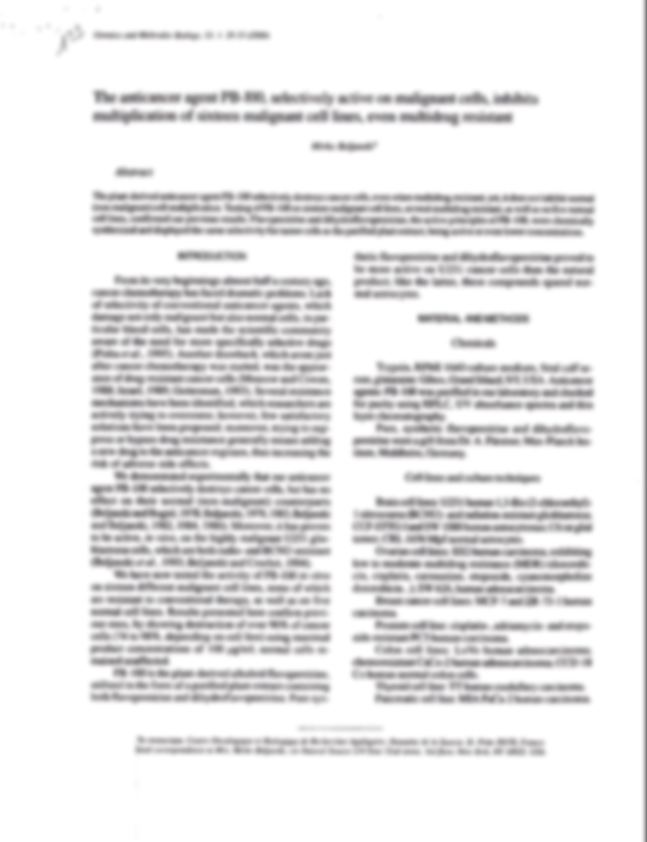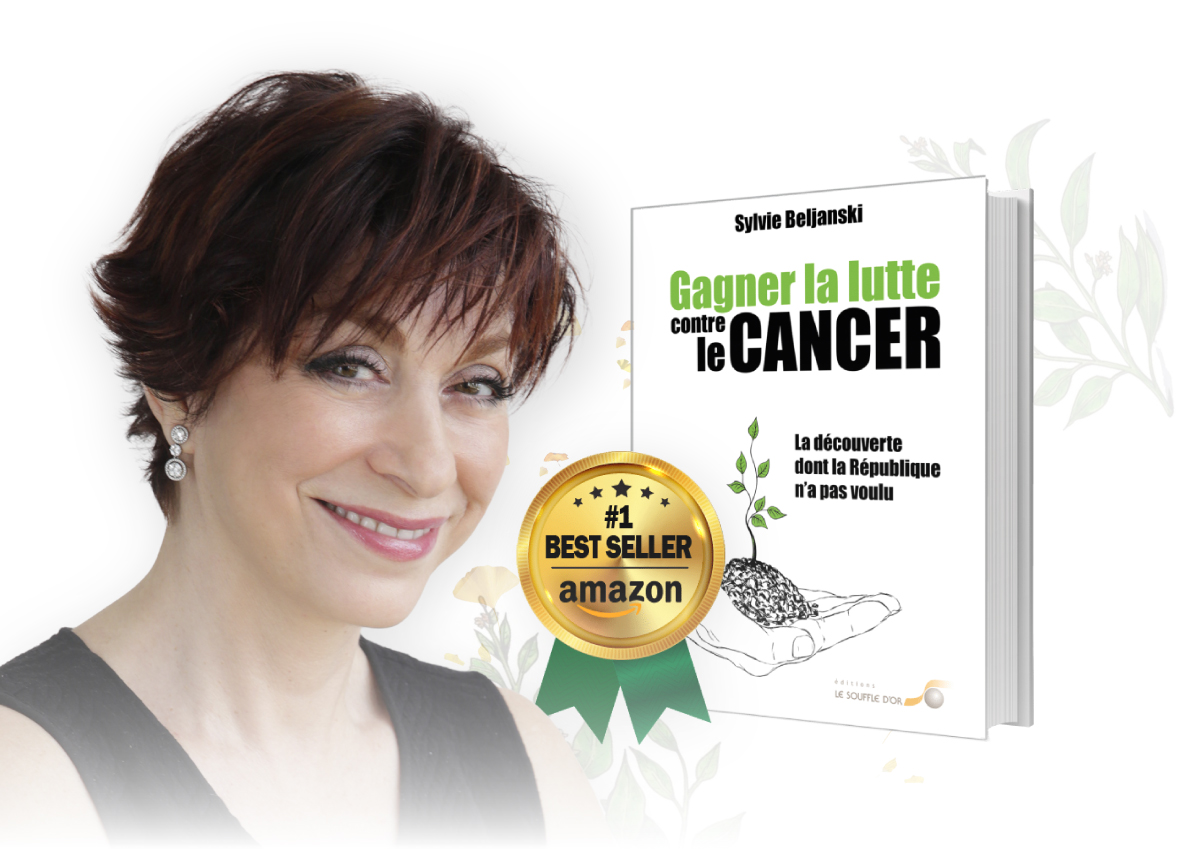Archives Publications
119 – Reverse Transcriptases in Bacteria: Small RNAs as Genetic Vectors and Biological Modulators
Brazil. J. Genetics, 14, 4, 1991, pp. 873-896.
Available in English only
ABSTRACT: In 1970, with my group at the Pasteur Institute in Paris, I observed that showdomycin resistant Escherichia coli cells excrete into their culture medium a small RNA, about 160 nucleotides long, rich in purine bases. This RNA transforms wild bacteria (E. coli and Agrobacterium tumefaciens) into transformants which exhibit new stable biochemical and physical characteristics. Thus A tumefaciens once transformed by E. coli transforming RNA, partially or often totally loses its oncogenic potentialities and acquires new properties. It appeared that reverse transcriptase might give transforming RNA the means of integrating into the genome of the transformed organisms the modifications it vectored. We demonstrated (1971-1972) that bacterial reverse transcriptase was involved in this process. In the course of our studies on bacterial transformation, we devised a technique which led to the discovery, first of RNA free reverse transcriptase in bacteria, then of RNA-bound reverse transcriptase which is easily distinguishable from DNA-dependent-DNA-polymerase. In 1989 several american scientists rediscovered reverse transcriptase in E. coli.
ABSTRACT: In 1970, with my group at the Pasteur Institute in Paris, I observed that showdomycin resistant Escherichia coli cells excrete into their culture medium a small RNA, about 160 nucleotides long, rich in purine bases. This RNA transforms wild bacteria (E. coli and Agrobacterium tumefaciens) into transformants which exhibit new stable biochemical and physical characteristics. Thus A tumefaciens once transformed by E. coli transforming RNA, partially or often totally loses its oncogenic potentialities and acquires new properties. It appeared that reverse transcriptase might give transforming RNA the means of integrating into the genome of the transformed organisms the modifications it vectored. We demonstrated (1971-1972) that bacterial reverse transcriptase was involved in this process. In the course of our studies on bacterial transformation, we devised a technique which led to the discovery, first of RNA free reverse transcriptase in bacteria, then of RNA-bound reverse transcriptase which is easily distinguishable from DNA-dependent-DNA-polymerase. In 1989 several american scientists rediscovered reverse transcriptase in E. coli.
118 – RNA Fragments (RLB) and Tolerance of Cytostatic Treatments in Hematology: A Preliminary Study about Two Non-Hodgkin Malignant Lymphoma Cases
Deutsche Zeitschrift für Onkologie, 23, 2, 1991, pp. 33-35.
Available in French only
ABSTRACT: Assays were carried out with short-chain RNA fragments in order to determine whether they can prevent or decrease chemotherapy-induced neutropenia and thrombopenia, as well as to evaluate side effects. We studied both first patients, 65 and 77 years old with non-Hodgkin lymphoma. The short-chain RNAs, administred bysublingual way every second day, appear useful in this indication. Neutrophils and platelets are significantly increased. In addition, tolerance of the RNA fragment is good and no side effect is observed. Chemotherapy protocols could be followed without treatment.
ABSTRACT: Assays were carried out with short-chain RNA fragments in order to determine whether they can prevent or decrease chemotherapy-induced neutropenia and thrombopenia, as well as to evaluate side effects. We studied both first patients, 65 and 77 years old with non-Hodgkin lymphoma. The short-chain RNAs, administred bysublingual way every second day, appear useful in this indication. Neutrophils and platelets are significantly increased. In addition, tolerance of the RNA fragment is good and no side effect is observed. Chemotherapy protocols could be followed without treatment.
117 – Cancer et Sida. Nouvelles approches thérapeutiques
5èmes Entretiens Internationaux de Monaco, 21-24 novembre 1990 (ed. du Rocher), pp. 25-37.
Available in French only
ABSTRACT: La sélectivité d’action des substances est une notion aussi nouvelle que fondamentale. Alors que toutes les autres solutions jusqu’ici offertes sont brutales, toxiques (les médicaments s’incorporant souvent sans retour dans les gènes), est offert une alternative ciblée, de toute sécurité, multifocale afin que le virus soit détruit, l’immunité protégée et l’équilibre rétabli, seules conditions pour une vie de qualité se dirigeant jour après jour vers la “guérison”..
ABSTRACT: La sélectivité d’action des substances est une notion aussi nouvelle que fondamentale. Alors que toutes les autres solutions jusqu’ici offertes sont brutales, toxiques (les médicaments s’incorporant souvent sans retour dans les gènes), est offert une alternative ciblée, de toute sécurité, multifocale afin que le virus soit détruit, l’immunité protégée et l’équilibre rétabli, seules conditions pour une vie de qualité se dirigeant jour après jour vers la “guérison”..
116 – Cancer Therapy: A New Approach
Deutsche Zeitschrift für Onkologie 5, 22, 1990, pp. 145-152.
Available in German only
Available in German only
115 – Résultats préliminaires de l’emploi des trois alcaloïdes sur des carcinomes prostatiques
In Tumori, Institute Nationale per le studio ed la cura dei tumori (ed. Lambrosiana), Vol. 75, suppl. 4, 1989.
“Resultati preliminari dell’impiego di tre alcaloidi nel carcinoma prostatico”
*Dr. Maurizio GRANDI, membre de l’académie des sciences de Rome
Available in French only
ABSTRACT: Nous avons étudié l’effet des alcaloïdes : Alstonine, Serpentime et Sempervirine, en association avec la radiothérapie sur 5 patients ayant un carcinome prostatique. Ces résultats confirment ceux déja obtenus en laboratoire sur la reconnaissance sélective du DNA néoplasique.
ABSTRACT: Nous avons étudié l’effet des alcaloïdes : Alstonine, Serpentime et Sempervirine, en association avec la radiothérapie sur 5 patients ayant un carcinome prostatique. Ces résultats confirment ceux déja obtenus en laboratoire sur la reconnaissance sélective du DNA néoplasique.
114 – Neoplastic Characteristics of the DNA Found in the Plasma of Cancer Patients
Oncology, 46, 1989, pp. 318-322.
Available in English only
ABSTRACT: About one third of patients with various malignant diseases were found to have extractable amounts of DNA in their plasma whereas no DNA could be detected in normal controls. Using the test established by one of us (M.B.), which is based on decreased strand stability of cancer cell DNA, we have found that several plasma DNA originate from cancer cells.
ABSTRACT: About one third of patients with various malignant diseases were found to have extractable amounts of DNA in their plasma whereas no DNA could be detected in normal controls. Using the test established by one of us (M.B.), which is based on decreased strand stability of cancer cell DNA, we have found that several plasma DNA originate from cancer cells.
113 – Reversible biophysical changes of DNAs from in vitro cultured non-tumour cells
Med. Sci. Res., 16, 1988, pp. 359-361.
Available in English only
ABSTRACT: We have previously shown that DNA fom plant Crown-gall tumour tissues is highly relaxed and thereby very susceptible to various DNA-destabilizing agents which, in contrast, do not affect DNA from healthy tissues. In vitro DNA strand separation (chain unpairing), the rate of in vitro DNA synthesis and in vivo increase in tumor cell multiplication are colsely correlated. Here we report that plant non-tumour cell DNA may temporarily undergo conformational changes when these cells are cultured in vitro in the presence of opines (octopine, nopaline, lysopine which accumulate in Crown-gall tissues or dl-ethionine (a known carcinogen in mammalian tissues). The induced DNA double-strand destabilisation and consequent increase in template activity are shown to be reversible under our experimental conditions.
ABSTRACT: We have previously shown that DNA fom plant Crown-gall tumour tissues is highly relaxed and thereby very susceptible to various DNA-destabilizing agents which, in contrast, do not affect DNA from healthy tissues. In vitro DNA strand separation (chain unpairing), the rate of in vitro DNA synthesis and in vivo increase in tumor cell multiplication are colsely correlated. Here we report that plant non-tumour cell DNA may temporarily undergo conformational changes when these cells are cultured in vitro in the presence of opines (octopine, nopaline, lysopine which accumulate in Crown-gall tissues or dl-ethionine (a known carcinogen in mammalian tissues). The induced DNA double-strand destabilisation and consequent increase in template activity are shown to be reversible under our experimental conditions.
112 – Iron stimulated RNA-dependent DNA polymerase Activity from goldfish eggs
Cellular and Molecular Biology, 34, 1988, pp. 17-25.
Document not available online
Document not available online
111 – Particular RNA primer from growth medium differentially stimulates in vitro DNA synthesis and in vivo cell growth of Neurospora crassa and its slime mutant
Current Genetics, 12, 1987, pp. 283-289
Available in English only
ABSTRACT: Purine rich small “RNA-primer” molecules (about 10-12 nucleotides), secreted into the growth medium of 3-h germinated conidia of N. crassa, strongly stimulated a concentration-dependent in vitro DNA synthesis of N. crassa slime mutant as well as DNAs from the human cancer cells but did not affect that from normal cells. These “RNA-primer” molecules stimulated also in vivo cell growth of N. crassa slime mutant, but not of the N. crassa wild type. Our studies suggest that DNAs from the slime mutant of N. crassa as well as DNAs from human cancerous cells provide increased sites for enhanced in vitro and in vivo replication of DNAs. “RNA-primer” molecules can be hydrolyzed by T1 RNase but not by pancreatic RNase.
ABSTRACT: Purine rich small “RNA-primer” molecules (about 10-12 nucleotides), secreted into the growth medium of 3-h germinated conidia of N. crassa, strongly stimulated a concentration-dependent in vitro DNA synthesis of N. crassa slime mutant as well as DNAs from the human cancer cells but did not affect that from normal cells. These “RNA-primer” molecules stimulated also in vivo cell growth of N. crassa slime mutant, but not of the N. crassa wild type. Our studies suggest that DNAs from the slime mutant of N. crassa as well as DNAs from human cancerous cells provide increased sites for enhanced in vitro and in vivo replication of DNAs. “RNA-primer” molecules can be hydrolyzed by T1 RNase but not by pancreatic RNase.
110 – Differential Synthesis and Replication of DNA in the Neurospora crassa Slime Mutant versus Normal Cells: Role of Carcinogens
Oncology, 44, 1987, pp. 327-330
Available in English only
ABSTRACT: Small quantities of carcinogens, dl-ethionine, thiotepa, actinomycin D, and 1-(2-chloroethyl-3-cyclohexyl)-1-nitrosourea (CCNU) stimulated in vitro deoxyribonucleic acid (DNA) synthesis of the slime mutant of Neurospora crassa, while there was practically no effect on the DNA from the normal wild type 74A strain. All of these compounds caused increased strand separation in the mutant DNA of N. crassa, but no separation of normal DNA strands. The growth (in vivo tests) of the N. crassa slime mutant, but not its wild type, was markedly increased when nontoxic concentrations of one of the carcinogens (dl-ethionine) tested were present in the growth medium. These observations suggest that, unlike the wild type N. crassa, the slime mutant allows an excessive and unscheduled replication, indicating destabilized nature of its DNA.
ABSTRACT: Small quantities of carcinogens, dl-ethionine, thiotepa, actinomycin D, and 1-(2-chloroethyl-3-cyclohexyl)-1-nitrosourea (CCNU) stimulated in vitro deoxyribonucleic acid (DNA) synthesis of the slime mutant of Neurospora crassa, while there was practically no effect on the DNA from the normal wild type 74A strain. All of these compounds caused increased strand separation in the mutant DNA of N. crassa, but no separation of normal DNA strands. The growth (in vivo tests) of the N. crassa slime mutant, but not its wild type, was markedly increased when nontoxic concentrations of one of the carcinogens (dl-ethionine) tested were present in the growth medium. These observations suggest that, unlike the wild type N. crassa, the slime mutant allows an excessive and unscheduled replication, indicating destabilized nature of its DNA.




